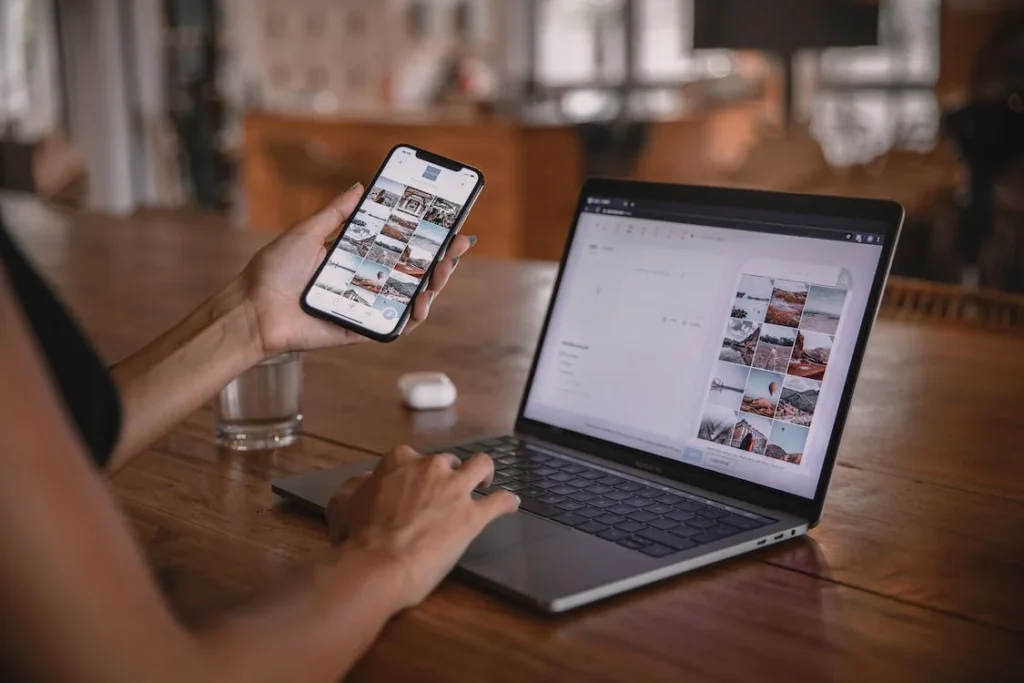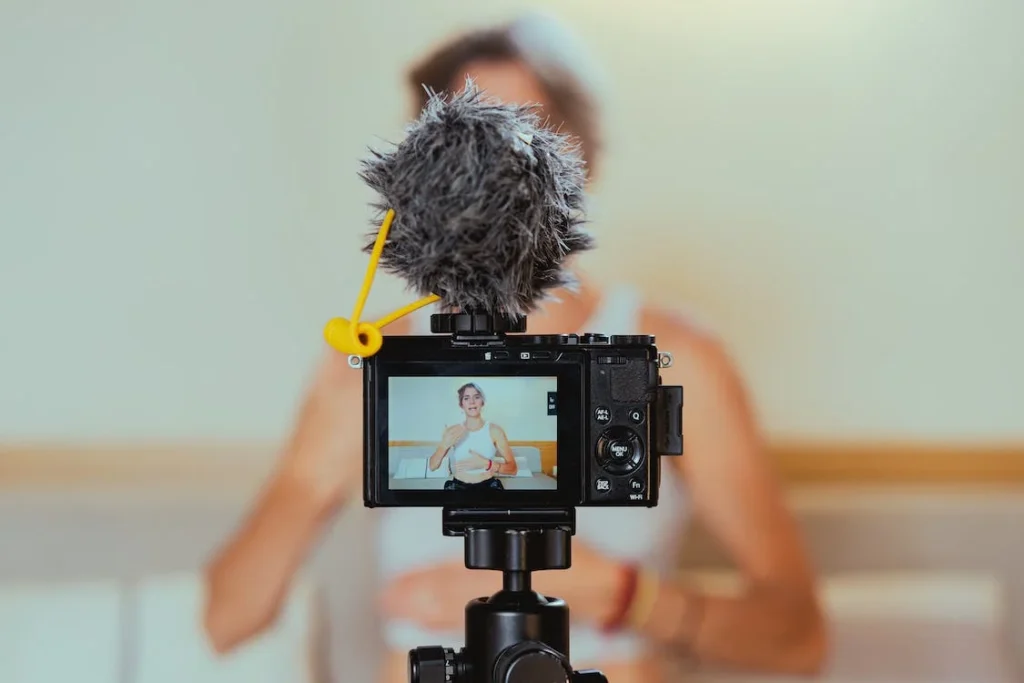This Article has been revised, edited and added to, by Poulomi Chakraborty.
- Understanding Influencer Impact: Micro vs. Macro Influencers
- Engaging Effectively with Influencers: Building Mutually Beneficial Relationships
- Crafting a Compelling Pitch
- Tailoring the Collaboration to Their Strengths
- Fostering Long-Term Engagement
- Monitoring and Refining Your Strategy
- Crafting a Partnership Mindset
- Developing Clear and Open Communication
- Ensuring Alignment and Authenticity
- Collaborative Goal Setting and Performance Reviews
- Long-Term Engagement Strategies
- Optimizing Influencer Campaigns: Advanced Strategies for Maximum Impact
- Leveraging Data to Fine-Tune Campaigns
- Enhancing Content Quality
- Creating Interactive and Engaging Content
- Continuously Engaging with Influencers
- Integrating Influencer Insights into Product Development
- Leveraging Technology for Enhanced Campaign Management
- Dynamic Content Customization
- Strategic Co-creation and Co-branding
- Focused Retargeting Efforts
- Tools and Platforms for Managing and Measuring Influencer Campaigns
- Integrating Influencer Marketing Tools into Existing Marketing Workflows
- Examples of Successful Integration of Influencer Marketing Tools
- Conclusion
In today’s fast-paced digital marketplace, leveraging the power of influencer marketing can significantly amplify your product’s visibility and sales. But not all strategies are created equal. The key to unlocking a successful influencer marketing campaign lies in understanding and implementing tailored tactics that not only reach but also resonate with your target audience. In this detailed guide, we’ll explore innovative strategies that can multiply your campaign results tenfold.
Understanding Influencer Impact: Micro vs. Macro Influencers
When diving into influencer marketing, one crucial decision businesses face is choosing between micro and macro influencers. This choice can dramatically influence the outcome of your campaign, but what exactly sets them apart, and how can you decide which is right for your digital product?
The Power of Reach: Macro Influencers
Macro influencers are typically characterized by their large follower counts, usually in the hundreds of thousands or even millions. These influencers have broad reach and are able to generate significant exposure for the brands they collaborate with.
Their appeal lies in their ability to quickly amplify a message across a vast audience. For digital products like software, apps, or e-courses, this can mean instant visibility across diverse demographics.
However, the vast reach of macro influencers comes with its own set of challenges. Their audiences are often diverse, which can dilute the specificity and relevance of marketing messages.
Additionally, endorsements by macro influencers can sometimes lack the personal touch that drives consumer action, as their large-scale operations might not allow the same level of personal engagement with each promoted product.
The Authenticity Advantage: Micro Influencers
On the other end of the spectrum are micro influencers, who typically have follower counts ranging from 1,000 to 100,000. These influencers tend to foster tight-knit communities with high levels of engagement and trust. The strength of micro influencers lies in their ability to create authentic, relatable content that resonates deeply with their followers.
For digital products, partnering with micro influencers can lead to higher conversion rates as their recommendations come off as more genuine and trustworthy. Their niche audiences often look to them for specific advice and recommendations, making their endorsements potentially more impactful on purchasing decisions.
Moreover, micro influencers are usually more approachable and willing to engage in deeper, longer-term collaborations, allowing for more strategic and integrated marketing efforts.
Making the Choice: Which is Right for Your Campaign?
Choosing between micro and macro influencers should be based on your specific campaign goals and the nature of the digital product you are promoting. If broad awareness is your primary objective, macro influencers might be the way to go. However, if you aim for higher engagement rates and conversions, micro influencers could offer more substantial benefits.
It’s also worth considering a mixed strategy that leverages the strengths of both types of influencers. Such an approach allows you to cast a wide net while also engaging specific target segments deeply.
Strategic Considerations for Choosing Influencers
The decision to work with micro or macro influencers should align with your startup’s specific marketing objectives and the nature of the product or service being offered. Macro influencers, with their large followings, are ideal for startups looking to create a buzz and reach a broad audience quickly.
They can be particularly effective during product launches or brand awareness campaigns where the goal is to gain maximum exposure in a short period. However, the vast reach of macro influencers might come with lower engagement rates and higher costs.
In contrast, micro influencers often boast higher engagement rates and a more targeted audience, making them suitable for startups that aim to establish a loyal customer base or penetrate niche markets.
Their endorsements are viewed as more trustworthy and personal, which can be incredibly valuable for products that require a bit of consumer education or rely heavily on user trust.
Developing a Tailored Influencer Strategy
Founders should consider not only the size of an influencer’s following but also the alignment between the influencer’s brand persona and the startup’s brand values. This alignment is crucial in ensuring that the influencer’s content resonates with their audience when discussing your product.
An effective strategy involves conducting thorough research to understand the demographics and interests of the influencer’s audience and evaluating past partnerships and their outcomes.
Once the right influencers are identified, the next step is to craft a campaign that integrates seamlessly with the influencers’ existing content style. This approach ensures that the promotional content does not disrupt the influencers’ normal content flow, which can help maintain the authenticity of their endorsements.
Additionally, involving influencers in the storytelling process by letting them share their genuine experiences and results using your product can significantly enhance the credibility and appeal of your campaign.
Measuring and Scaling Influencer Impact
After launching an influencer campaign, it is vital to track its performance meticulously. Use metrics such as engagement rate, conversion rate, and the return on investment to assess the effectiveness of each influencer.
These insights will not only help you understand which type of influencer works best for your brand but also enable you to optimize future campaigns.
If a particular strategy works well with micro influencers, consider gradually scaling up the number of influencers to amplify the impact. Conversely, if a macro influencer brings valuable exposure, you might explore additional collaborations with other macro influencers or even consider a brand ambassador role to deepen the relationship and enhance ongoing engagement with their audience.
By carefully selecting and strategically engaging with either micro or macro influencers, startup founders can significantly enhance their market presence and achieve their marketing objectives more effectively.
The key lies in tailoring the approach to fit the unique dynamics of your audience and product, ensuring that every influencer campaign is not just a promotion but a meaningful interaction that adds value to both the consumers and the brand.
Engaging Effectively with Influencers: Building Mutually Beneficial Relationships
Crafting a Compelling Pitch
When reaching out to influencers, whether micro or macro, the initial pitch is crucial. It sets the tone for your potential relationship. Your pitch should be personalized, clearly outlining why you chose this particular influencer and how your digital product aligns with their audience’s interests.
Avoid generic messages; influencers receive countless pitches and can easily spot a mass-sent email. Mention specific posts or campaigns that impressed you and explain why a partnership could be beneficial for both parties.
Tailoring the Collaboration to Their Strengths
Once an influencer shows interest, the next step is to design a campaign that plays to their strengths. For macro influencers, consider broad-reaching activities like giveaways or live events that can make a big splash. For micro influencers, deeper, content-driven campaigns like detailed product reviews, how-to videos, or personal testimonial posts often work well.
It’s important to allow influencers some creative freedom. They know their audience best and can present your product in a way that feels organic and engaging.
However, it’s also vital to provide clear guidelines regarding the messaging and any specific points that need to be included, ensuring the content aligns with your brand values and campaign goals.
Fostering Long-Term Engagement
Building long-term relationships with influencers can yield ongoing benefits. When influencers become genuine fans of your brand, their endorsements become more authentic and persuasive.
Establishing such relationships means going beyond one-off projects. Consider involving influencers in product development, getting their feedback, or having them as long-term brand ambassadors.
Providing them with exclusive updates, products, or services before public release not only makes them feel valued but also keeps them engaged with your brand. Regular communication and appreciation posts about their work on your channels can also enhance this relationship.
Monitoring and Refining Your Strategy
As with any marketing strategy, monitoring the performance of your influencer collaborations is crucial. Track metrics such as engagement rates, traffic, and conversions attributable to influencer activities. This data can help you understand what’s working and what’s not, allowing you to refine your approach continuously.
Use tools to monitor the campaign in real-time and adjust strategies as needed. For instance, if a video series with a micro influencer is gaining more traction than expected, consider extending the series or integrating additional calls to action that might convert viewers into customers.
Crafting a Partnership Mindset
When engaging with influencers, it’s vital to approach the relationship as a partnership rather than a one-off transaction. This means considering the needs and goals of the influencers as well as your own. For a relationship to be truly beneficial, it should provide value to both parties.
For instance, while the influencer helps promote your product, your startup can offer them unique experiences, exclusive content, or products that align with their brand. Engaging them in product development or providing them with data that helps them understand their audience better are ways to add value beyond the standard compensation.
Developing Clear and Open Communication
Effective communication is the backbone of any successful relationship. Establishing clear, open, and consistent communication channels with influencers is essential.
This goes beyond negotiating terms and discussing content guidelines; it involves regular updates, feedback sessions, and the occasional check-in to foster a genuine connection. Providing influencers with a direct contact within your company can make them feel supported and valued, which is crucial for a long-term relationship.
Ensuring Alignment and Authenticity
For the partnership to be effective, there must be a strong alignment between the influencer’s content and persona and your brand’s values and messaging. This alignment should be assessed continuously throughout the partnership.
Regularly review the influencer’s content to ensure it remains true to your brand’s message and ethics. Additionally, encourage authenticity by allowing influencers to express their genuine opinions about your products. Authentic endorsements are more likely to resonate with their audience, thereby enhancing credibility and trust.
Collaborative Goal Setting and Performance Reviews
Setting shared goals is another strategy to ensure the success of influencer partnerships. These goals should be specific, measurable, achievable, relevant, and time-bound (SMART), and agreed upon by both parties.
Regular performance reviews against these goals not only help in measuring success but also provide opportunities to adjust strategies and expectations from both sides. This ongoing evaluation process keeps both the influencer and the startup aligned and focused on continuous improvement.
Long-Term Engagement Strategies
Think beyond individual campaigns. Developing long-term engagement strategies with influencers can lead to sustained brand growth. Consider establishing ambassador programs or exclusive memberships for top-performing influencers.
These programs can offer incentives like performance bonuses, co-branded product opportunities, or increased visibility through your brand’s channels. Such initiatives not only incentivize influencers to maintain high performance but also deepen their loyalty and advocacy for your brand.
By nurturing these relationships through strategic engagement, clear communication, and aligned goals, startup founders can turn influencer partnerships into a powerful asset for their marketing strategy. The success of these collaborations depends on a mutual commitment to growth and the shared pursuit of reaching and engaging your target audience effectively.
Optimizing Influencer Campaigns: Advanced Strategies for Maximum Impact
Leveraging Data to Fine-Tune Campaigns
One of the most powerful tools in optimizing influencer marketing campaigns is data. By analyzing engagement metrics, click-through rates, and conversion data from initial efforts, brands can identify what resonates best with their audience and adjust their strategies accordingly.
Using A/B Testing:
Implement A/B testing by having influencers post different types of content or messages to see which performs better. For instance, one influencer could post a video tutorial while another posts a before-and-after photo using the same product. Comparing the results can provide clear insights into the content styles and messaging that drive the most engagement and conversions.
Segmentation and Personalization:
Use data to segment the audience based on their interactions and preferences. Personalize follow-up campaigns to these segments. For example, if certain followers engage more with posts about specific features of a product, future posts can dive deeper into these features for that segment.
Enhancing Content Quality
The quality of content produced in collaboration with influencers directly affects the perception of your brand and the effectiveness of the campaign. Investing in high-quality visual and narrative content can significantly boost engagement and conversion rates.
Professional Production Support:
Consider providing influencers with professional photography or videography support to enhance the visual appeal of their content. This can be especially effective for high-end digital products where visual presentation can influence perceived value.
Storytelling Techniques:
Encourage influencers to use storytelling in their content. A compelling story that illustrates the problem your product solves or the joy it brings can create a stronger emotional connection with the audience than a straightforward product showcase.
Creating Interactive and Engaging Content
Interactive content can significantly increase user engagement, providing more value both to the audience and the brand. This can include quizzes, polls, or challenges that encourage audience participation.
Host Live Sessions:
Arrange for influencers to host live sessions on platforms like Instagram or YouTube, where they can interact directly with their audience, demonstrate the product in real time, and answer questions. This interaction enhances trust and can lead to higher conversion rates.
Engagement Challenges:
Create challenges or competitions where followers of influencers can participate by submitting their own content or trying out a free version of the product. This not only engages the community but also provides user-generated content that can be used in future marketing efforts.
Continuously Engaging with Influencers
Maintaining an ongoing relationship with influencers can provide continuous benefits. Regular check-ins and updates about new features or products keep the influencers engaged and informed, making it easier for them to integrate your products into their regular content.
Influencer Feedback:
Regularly solicit feedback from influencers on the campaign and the product. This can provide valuable insights into product improvements and future marketing strategies.
Exclusive Access:
Give influencers early access to new features or products. This makes them feel valued and often leads to more genuine and enthusiastic promotions.
Integrating Influencer Insights into Product Development
One powerful strategy is to integrate influencer feedback directly into product development and marketing strategies. Influencers are often closely attuned to consumer preferences and trends within their niches, making their insights incredibly valuable.
By involving them early in the product lifecycle, you can leverage their understanding to tailor your offerings to better meet market demands. This collaborative approach not only enriches the product but also makes influencers feel more invested in the success of what they’re promoting, leading to more passionate and convincing endorsements.
Leveraging Technology for Enhanced Campaign Management
Utilizing the latest technologies can provide a competitive edge in managing influencer campaigns. Artificial intelligence (AI) and machine learning (ML) can analyze vast amounts of data from influencer campaigns to identify patterns and predict outcomes, helping you to make data-driven decisions.
For example, AI can optimize the selection of influencers based on predicted reach and engagement, or suggest the best times to post content for maximum impact. Advanced analytics platforms can also track the customer journey from influencer interactions to final conversions, providing clear metrics on campaign effectiveness.
Dynamic Content Customization
The dynamic customization of content is another advanced strategy. This involves creating influencer content that is tailored not only to the audience’s general preferences but also to their current behaviors and interactions.
By using data analytics to monitor how viewers respond to different types of influencer content in real time, your startup can quickly adjust messaging, tone, and even visual elements to better resonate with the audience. This adaptive approach keeps content fresh and engaging, maximizing viewer interest and interaction rates.
Strategic Co-creation and Co-branding
Engaging in strategic co-creation and co-branding with influencers can elevate the perceived value and uniqueness of your offerings. This strategy involves developing new products or content in partnership with influencers, thereby blending their personal brand with yours.
Such collaborations are often viewed as more authentic and can generate significant buzz. Co-branding opportunities also provide exclusive content that can attract both the influencer’s and your brand’s audiences, increasing cross-exposure and drawing in a broader customer base.
Focused Retargeting Efforts
Finally, implementing focused retargeting efforts based on influencer campaign interactions can dramatically improve conversion rates. By tracking users who engage with influencer content and retargeting them with personalized ads, your startup can stay top-of-mind and encourage them toward a purchase decision.
This strategy ensures that the momentum built through influencer campaigns is capitalized upon, maximizing the conversion potential from each user interaction.
By adopting these advanced strategies, startup founders can not only optimize their influencer campaigns but also turn them into a core growth engine for their businesses.
Each of these tactics involves a deep integration of technology, creativity, and strategic planning, aimed at producing not just short-term gains but long-term brand loyalty and customer engagement.
Tools and Platforms for Managing and Measuring Influencer Campaigns
To streamline the management of influencer marketing campaigns and effectively measure their impact, numerous specialized tools and platforms have been developed. These solutions help brands plan, execute, monitor, and analyze influencer activities with greater efficiency and accuracy.
Influencer Relationship Management Platforms
AspireIQ (formerly Revfluence):
AspireIQ is a comprehensive platform that facilitates the discovery and management of influencer relationships. It provides tools for handling everything from influencer outreach and content management to payments. The platform also offers robust analytics to track the performance of each influencer and campaign, helping brands to measure ROI effectively.
Upfluence:
Upfluence features powerful search capabilities to find influencers across various social media platforms based on keywords, demographics, and engagement statistics. It integrates with e-commerce platforms like Shopify to track sales generated directly from influencer campaigns. This real-time data is crucial for adjusting campaigns and strategies quickly.
Content and Campaign Management
Traackr:
Traackr allows brands to manage their influencer relationships at scale, providing tools to monitor the performance of campaigns across multiple channels. It focuses on data-driven insights to optimize spending and tailor content to the audience’s preferences and behaviors.
Tagger Media:
Tagger Media offers a platform with a rich database of influencers and robust tools for planning and executing marketing campaigns. It provides detailed insights into audience demographics and influencer performance metrics, making it easier for brands to tailor their content and strategies based on data-driven insights.
Social Media Analytics Tools
Hootsuite:
While primarily known as a social media management tool, Hootsuite also offers features that can be used to monitor the effectiveness of influencer campaigns. It allows for tracking mentions, hashtags, and keywords associated with the campaign, providing insights into reach and engagement.
Sprout Social:
Sprout Social provides detailed reporting features that can analyze campaign performance, track engagement metrics, and measure audience growth. Its listening tools are particularly useful for understanding how audiences react to influencer campaigns and identifying opportunities for engagement.
Performance Tracking and ROI Measurement
Impact:
Impact’s platform focuses on tracking the direct results of influencer campaigns, particularly in terms of conversions and ROI. It integrates with various marketing tools to provide a comprehensive view of how influencer efforts are contributing to broader marketing goals.
BuzzSumo:
BuzzSumo isn’t exclusively an influencer tool, but it offers features that can be used to analyze the content performance of influencers. It helps identify which types of content are resonating with audiences and which influencers are getting the most traction for topics relevant to your brand.
These tools and platforms can greatly enhance the efficiency and effectiveness of influencer marketing campaigns by providing actionable insights and streamlined management capabilities. By choosing the right mix of these solutions, brands can not only save time and resources but also significantly improve their campaign outcomes.
Integrating Influencer Marketing Tools into Existing Marketing Workflows
To harness the full potential of influencer marketing tools, it’s essential to integrate them smoothly into your existing marketing workflows. This integration ensures that your campaigns are cohesive, data-driven, and efficiently managed across all platforms. Here’s how you can achieve this:
Step 1: Choose the Right Tools for Your Needs
Start by assessing your specific needs and challenges in influencer marketing. If your main challenge is finding the right influencers, a tool like Upfluence or AspireIQ might be ideal. If you need to track campaign performance and ROI meticulously, consider using Impact or a similar platform. It’s crucial to select tools that not only address your primary needs but also integrate well with other software you are using, such as CRM systems, analytics tools, or content management systems.
Step 2: Establish Clear Communication Channels
Ensure that all team members involved in marketing and sales are familiar with the tools and understand their roles in the workflow. Establish clear communication channels and protocols for using these tools. For example, decide who is responsible for uploading content to the platform, who monitors analytics, and how often the team meets to discuss insights from the data.
Step 3: Streamline Content Creation and Approval
Use influencer marketing platforms to streamline the content creation and approval process. These tools often allow for direct communication with influencers and provide features to approve posts before they go live. Incorporate these steps into your marketing calendar to ensure that influencer content aligns with other marketing activities and campaigns.
Step 4: Incorporate Data into Broader Marketing Strategies
Make sure the data collected from influencer marketing tools is not siloed. Integrate this data with your broader marketing analytics to gain a comprehensive view of your marketing efforts. Tools like Hootsuite and Sprout Social can be linked with Google Analytics or other analytics platforms to track how influencer-driven traffic behaves on your site compared to other traffic sources.
Step 5: Automate Routine Tasks
Leverage the automation capabilities of these tools to reduce manual work and minimize errors. For instance, set up automatic tracking of specific hashtags, mentions, or keywords related to your influencer campaigns. Automating these tasks allows your team to focus on more strategic activities, such as analyzing campaign performance and optimizing strategies.
Step 6: Monitor and Adjust Regularly
Regular monitoring and adjustment based on real-time data are crucial. Use the analytics features of your influencer tools to keep track of campaign performance and make adjustments as necessary. This could mean shifting focus between influencers, tweaking the message, or even reallocating budget based on what’s working best.
Step 7: Train and Educate Your Team
Finally, provide ongoing training and updates about these tools to your team. As new features are released and as your team’s proficiency with the tools improves, continuous learning will help you maximize the value of your investments in these platforms.
Integrating influencer marketing tools into your existing workflows not only streamlines processes but also enhances the effectiveness of your marketing efforts. By following these steps, you can ensure a seamless operation that leverages the full capabilities of your chosen tools and aligns with your overall marketing strategy.
Examples of Successful Integration of Influencer Marketing Tools
Example 1: Global Beauty Brand Enhances Campaigns with AspireIQ
Background: A leading global beauty brand was looking to amplify its new product line launch and wanted to leverage influencer marketing to reach diverse demographics.
Integration and Implementation: The brand chose AspireIQ to streamline the management of their large and varied pool of influencers. They integrated AspireIQ with their existing customer relationship management (CRM) system to keep track of all interactions and ensure seamless communication across teams.
Strategy: Using AspireIQ’s comprehensive database, the brand identified influencers in multiple regions with varied demographics and interests. They created tailored content guidelines to ensure brand consistency while allowing influencers to add their personal touch.
Outcome: The integration allowed the brand to manage hundreds of influencers effortlessly, with real-time updates and performance tracking. The campaign led to a significant increase in engagement and a 30% uptick in sales for the product line. The seamless integration into their CRM also allowed the marketing team to measure the long-term value of influencer relationships.
Example 2: Tech Startup Boosts Engagement with Tagger Media
Background: A tech startup developed an innovative app designed to enhance productivity. Despite having a powerful product, they struggled with market penetration and brand awareness.
Integration and Implementation: The company used Tagger Media to find influencers who were productivity gurus or tech enthusiasts. Tagger’s analytics capabilities were integrated with the startup’s marketing dashboard to measure the effectiveness of each influencer’s content.
Strategy: The startup provided influencers with creative freedom to showcase how the app fits into their daily routines, emphasizing real-world applications. They used Tagger Media to monitor engagement rates and audience feedback in real-time.
Outcome: The campaign resulted in a 50% increase in app downloads and significantly improved user engagement. Integrating Tagger Media’s insights with their marketing dashboard allowed the startup to quickly adjust their strategies and optimize their campaigns.
Example 3: Fashion Retailer Optimizes Campaigns with Impact
Background: A fashion retailer aimed to expand its reach among millennials and Gen Z consumers by tapping into influencer marketing.
Integration and Implementation: They selected Impact for its ability to track detailed conversion metrics and integrated it with their e-commerce platform. This setup enabled them to directly correlate influencer activities with sales.
Strategy: The retailer worked with a mix of macro and micro-influencers, focusing on those with a strong presence on Instagram and TikTok. They utilized Impact’s tools to track which influencers were driving the most conversions and adjusted their budget to favor higher-performing influencers.
Outcome: The focused strategy led to a 40% increase in ROI compared to previous influencer campaigns. The integration provided clear, actionable data that helped the retailer make informed decisions about where to invest in influencer relationships.
These case examples illustrate the benefits of strategically integrating influencer marketing tools into existing workflows. By leveraging these tools, companies can enhance their campaign effectiveness, streamline management, and generate actionable insights that drive decision-making and improve ROI.
Conclusion
Influencer marketing has transformed how brands connect with their audiences, offering a blend of authenticity and reach that traditional advertising can rarely match. By integrating specialized tools such as AspireIQ, Tagger Media, and Impact into their marketing workflows, companies can streamline the management of influencer relationships, enhance content quality, and precisely measure campaign results. The success stories of global beauty brands, tech startups, and fashion retailers underscore the strategic value of these tools.
They not only facilitate efficient campaign management but also provide deep insights that help refine marketing strategies and optimize spending. Ultimately, whether aiming to launch a new product, boost brand awareness, or penetrate new market segments, the thoughtful integration of influencer marketing tools can significantly amplify a brand’s digital presence and drive meaningful engagement. This approach, when executed well, aligns influencer creativity with data-driven marketing tactics to deliver campaigns that resonate deeply with target audiences, thereby maximizing both reach and return on investment.
Read next:
- HubSpot CRM vs Zoho CRM: Which One Should You Choose?
- 13 Best ERP Systems for You in 2023: Reviewed
- Zapier vs IFTTT: Which one to Choose In 2023?
- How to Redesign your Website: A 7-Step Process!
- Why You Should Use Python For Business Analytics?






















Comments are closed.